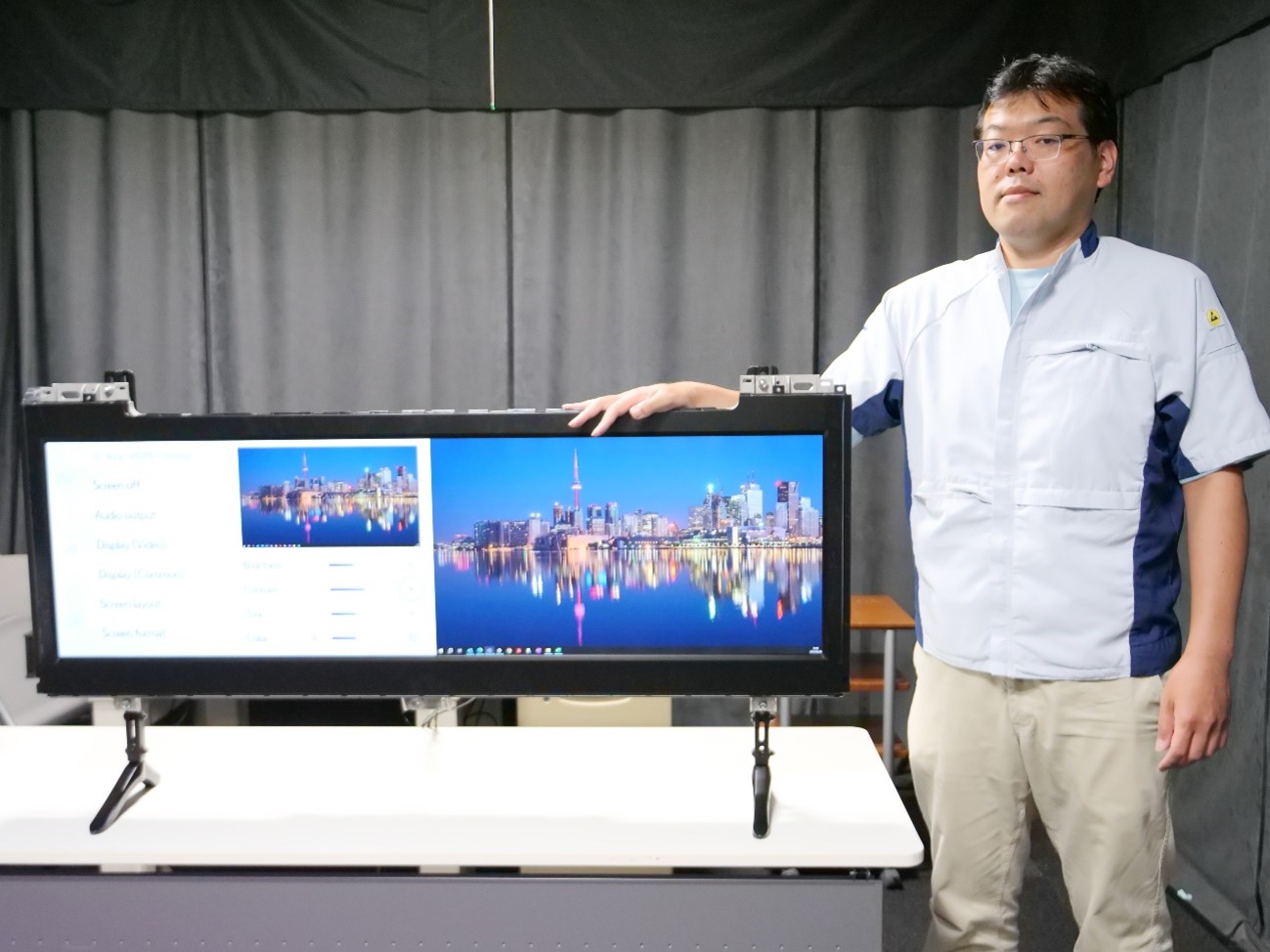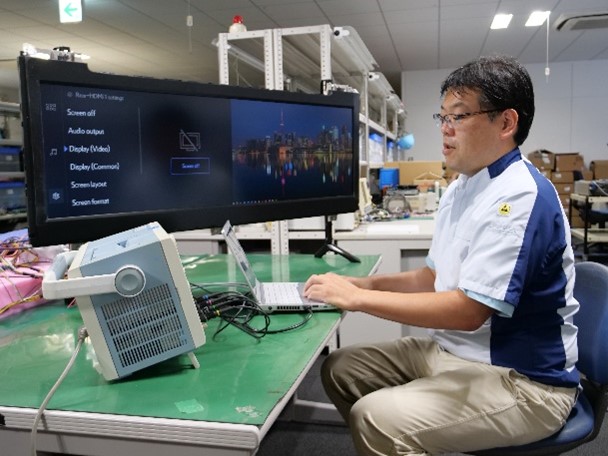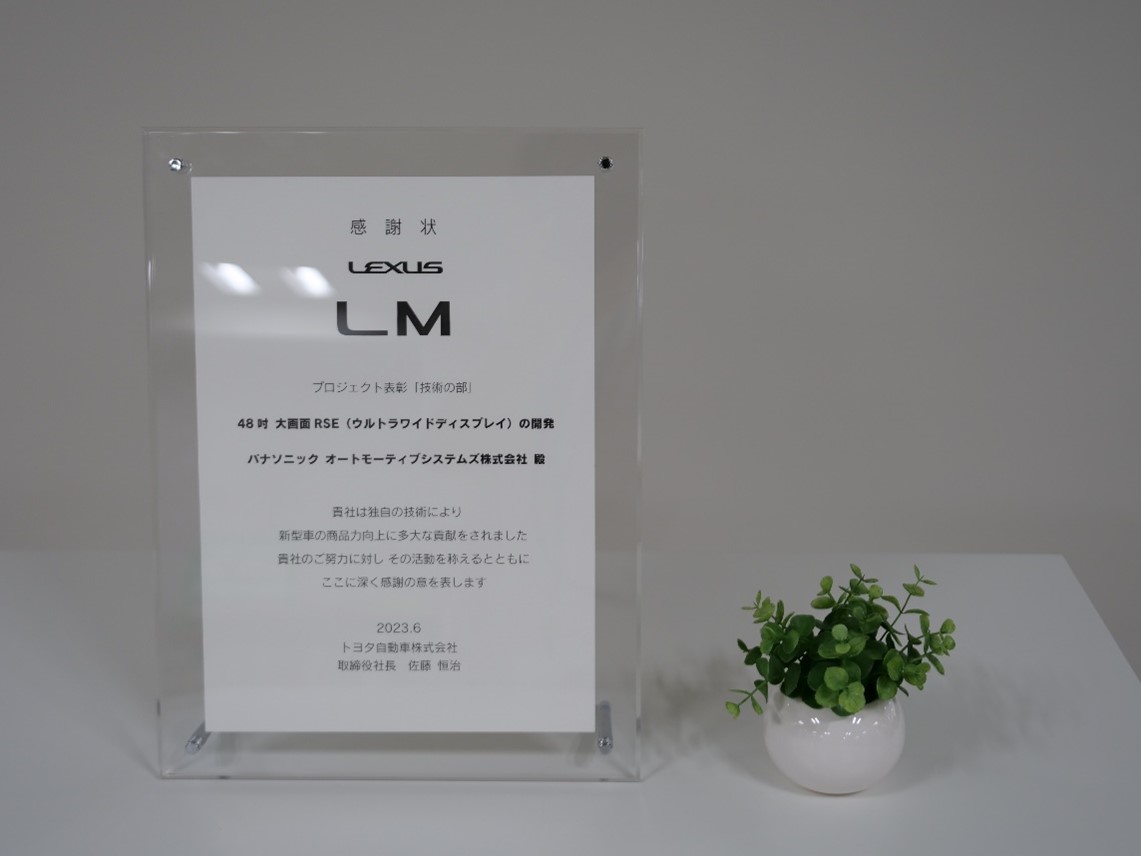Newsroom
Pursuing Car Manufacturers’ Requests and Making Thorough Adjustments Has Earned Our Customers’ Trust
Our 48-inch rear-seat display system (48-inch display) has been adopted by Toyota Motor Corporation (hereinafter Toyota) for its Lexus LM. This is the first time that our 48-inch display has been installed in passenger vehicles. It is rare in the industry for a display of this size to be installed in a car, and this product is the result of our ability to respond to customization requests from car manufacturers and our technology that lets us fulfill them. We interviewed the engineer who focused his energy on site to learn about his development journey and the difficulties he faced.

My involvement began as an electrical circuit designer with a 26-inch display, which was the predecessor to the 48-inch display. Since joining the company, I have been working exclusively on rear-seat display systems.
I originally joined Matsushita Communication Industrial Company, when the cell phone business was at its peak and many people around me wanted to be involved in it. I wanted to work on car navigation systems, and after negotiating with HR regarding my assignment, I was assigned to my current department.
Please tell us more about how this development project started.
Initially, the plan was to have a 26-inch display that followed the previous model, and to evolve the functions and make it more reasonably priced. However, as the conversation progressed, the previous model was also targeted at the wealthy Chinese market, and the car manufacturer asked if new initiatives could be taken, with a display larger than 26 inches to make a greater impact. I have a clear memory of realizing that there was no product in the world that could meet their requirements, so we had to forge ahead with our review while groping in the dark.


We initially proposed using two 26-inch displays side by side to make them look larger.
We already had a system that operated multiple displays as a single unit, and the software had already been built to a certain degree, so we proposed this system because it would have the advantage of shortening the development period. But the desire for a single large display to fulfill the request was reiterated, and I’m sure my eyes just went blank (laughs).
From there, we started development of the LCD from scratch in order to fulfill the demand for viewing on a single screen. At first, we were repeatedly told by our cooperating LCD manufacturers that commercialization would be difficult. However, there was enthusiasm from the car manufacturer, and we worked on this project with the sentiment that we had to respond to this request. The vehicle itself this time was focused on rear-seat comfort, and there is a glass panel above the display that can be raised and a refrigerator below, so the size of the display had to be kept to a certain width. There were difficulties in meeting the in-vehicle regulations, as well as fulfilling the physical requirements.
How long did these difficulties last?
Since we developed the LCD, the main component, from scratch, we were making adjustments until the very end to determine how far we could go to produce something with specifications that matched the car’s specifications. The car manufacturer asked us if we could make it as large as possible, but we had to explain logically and carefully that the reason we could not do so was because of strength and vibration problems, and since we had the cooperation of our suppliers for the LCDs, we had to coordinate not only internally but also in many other areas.
By overcoming these hardships, we were able to successfully commercialize the product and received a letter of appreciation from the car manufacturer in the technology category, so I think the hard work paid off.
How do you plan to apply this experience in the future?
I believe that we are at a point where the concept of what a car is changing. For example, the concept of the back seat itself may disappear in the case of community cars, which currently take the form of passenger cars. It may be possible that all of the surrounding area could be integrated with the glass and display so that the view can be enjoyed. Many companies have already conducted demonstration tests, but considering that the demands of car manufacturers are reaching into unexpected areas, I think that cultivating the technological capabilities to respond to customization in this way will be an important factor in staying ahead of the competition. I hope to continue to develop new systems from the perspectives of car manufacturers and users.

